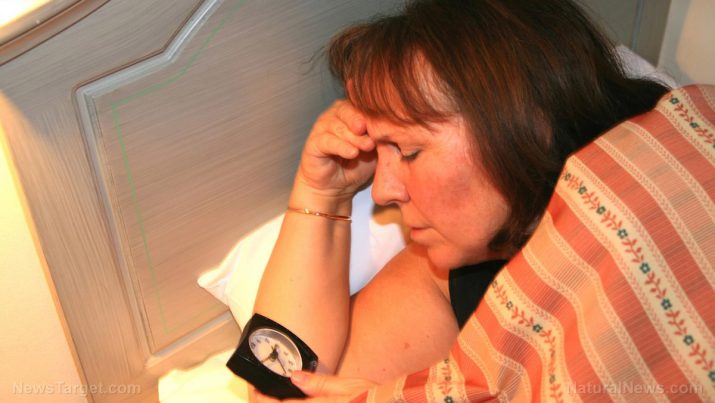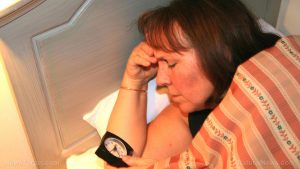
African sleeping sickness – causes, side effects and treatments at NaturalPedia.com
Wednesday, December 20, 2017 by Frances Bloomfield
http://www.naturalpedia.com/african-sleeping-sickness-causes-side-effects-and-treatments-at-naturalpedia-com.html

African trypanosomiasis, more commonly known as African sleeping sickness, is a systemic disease caused by the protozoa of the Trypanosoma brucei, a species of parasitic kinetoplastid. There are two subspecies of this parasite responsible for the disease in different parts of Africa. Trypanosoma brucei gambiense can be found in west and central Africa, and can induce a chronic infection that lasts for years. On the other hand, Trypanosoma brucei rhodesiense is common to east and southern Africa, and causes the acute, more virulent and faster-developing form of African sleeping sickness. The third subspecies, Trypanosoma brucei var. brucei, only affects animals.
Both are transmitted by infected tsetse flies. Also called tik-tik fly, the name refers to any of two to three dozen bloodsucking flies that occur exclusively in Africa. Tsetse flies live mainly in rural areas; specifically, in the woodland groves of savannas and vegetation bordering streams. According to HopkinsMedicine.org, people living in the following African countries are most at risk of being bitten by tsetse flies:
- Angola
- Central African Republic
- Chad
- Congo
- Democratic Republic of Congo
- Malawi
- Tanzania
- Sudan
- Uganda
- Zambia
As a whole, however, African sleeping sickness has been recorded in 36 sub-Saharan African nations, and places over 60 million people at risk. Though millions of people have lost their lives to this disease, these numbers have been steadily declining over the years thanks to increased awareness and vigilance.

Known side effects of African sleeping sickness
The symptoms of African sleeping sickness tend to occur within one to four weeks of infection. During the early or hemolymphatic stage of the disease, the following symptoms may manifest in an infected person:
- Arthralgias (Joint pains)
- Facial edema
- General malaise
- Generalized or regional lymphadenopathy (Palpable enlargement of the lymph nodes)
- Headaches
- Intermittent fever
- Myalgia (Muscle pains)
- Skin lesions
The late or neurologic stage of African sleeping sickness is characterized by the following symptoms:
- Behavioral changes like depression or mood swings
- Difficulty walking and talking
- Lack of appetite
- Persistent headaches
- Progressive confusion
- Seizures
- Sleeping during the daytime, followed by nighttime insomnia
- Wasting syndrome
- Weight loss
Left untreated, African sleeping sickness is fatal, and can bring about the death of infected persons within weeks or months.
Body systems harmed by African sleeping sickness
During the early stage of African sleeping sickness, the parasites can proliferate in the blood, lymphatics, and subcutaneous tissues. From there, they can spread into and damage the liver, spleen, heart, endocrine glands, and joints.
The later stage of African sleeping sickness occurs when the parasites have crossed the blood-brain barrier and made their way into the central nervous system.
Food items or nutrients that may prevent African sleeping sickness
There are no food items or nutrients that can prevent this disease.
Treatments, management plans for African sleeping sickness
Treating African sleeping sickness depends primarily on the disease stage, and typically consists of administering drugs. The first-stage drugs for this disease are pentamidine and suramine, both of which are known to have undesirable side effects of their own but are generally well tolerated.
Later-stage drugs include melarsoprol, eflornithine, and nifurtimox. Melarsoprol is used to treat both forms of African sleeping sickness, but has many side effects due to being derived from arsenic. Eflornithine is less toxic than melarsoprol, but the regimen is complicated and difficult to apply, according to WHO.int.
To prevent African sleeping sickness, one must avoid the bite of tsetse flies. Some precautionary measures include:
- Avoid riding in the back of open vehicles, as tsetse flies are attracted to the dust kicked up by moving vehicles.
- Make use of bed nets while sleeping.
- Opt for neutral-colored clothing, since tsetse flies are said to be attracted to bright and dark colors.
- Stay away from bushes, as these are the favorite resting spots of tsetse flies.
- Wear protective clothing made of thick fabric, like long-sleeved shirts and pants.
Where to learn more
Summary
Though not as common as it used to be, African sleeping sickness remains a problem for sub-Saharan African countries. This parasitic, insect-borne disease occurs in two stages: the first stage will have the infected person experience fevers, headaches, and joint pains, while the second stage will be marked by poor coordination, sleeping difficulties, and confusion. This disease is fatal if it isn’t treated immediately.
Sources include:
Tagged Under: Tags: African sleeping sickness





